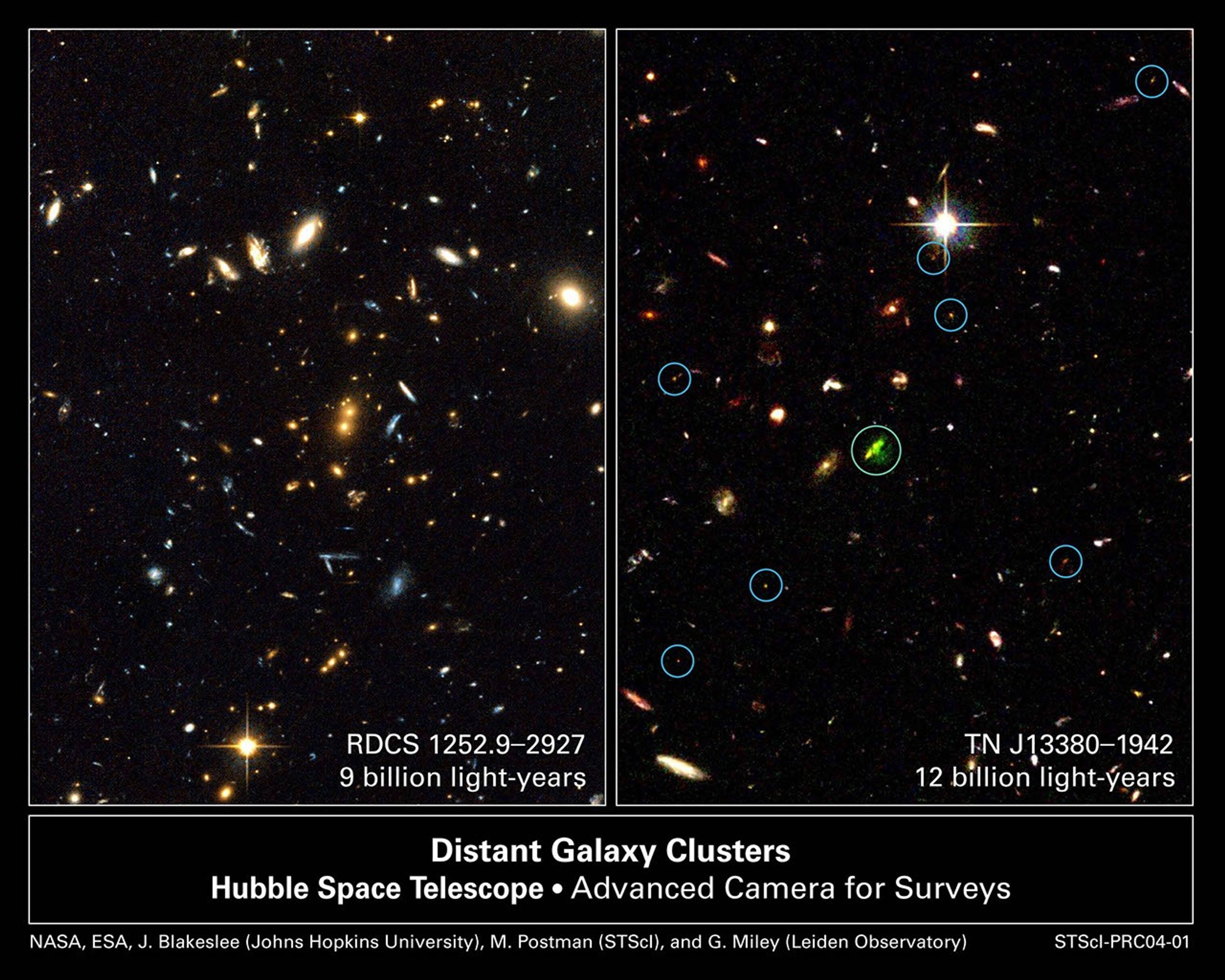1 min read
Massive Galaxy Cluster RDCS 1252

About the Object
- R.A. PositionR.A. PositionRight ascension – analogous to longitude – is one component of an object's position.12h 52m 54.0s
- Dec. PositionDec. PositionDeclination – analogous to latitude – is one component of an object's position.-29° 27' 17.0"
- ConstellationConstellationOne of 88 recognized regions of the celestial sphere in which the object appears.Hydra
- DistanceDistanceThe physical distance from Earth to the astronomical object. Distances within our solar system are usually measured in Astronomical Units (AU). Distances between stars are usually measured in light-years. Interstellar distances can also be measured in parsecs.9 billion light-years (2.6 billion parsecs)
About the Data
- Data DescriptionData DescriptionProposal: A description of the observations, their scientific justification, and the links to the data available in the science archive.
Science Team: The astronomers who planned the observations and analyzed the data. "PI" refers to the Principal Investigator.The field was imaged by Hubble during proposal 9290: H. Ford (JHU), M. Postman (STScI), M. Franx (University of Leiden), J. Blakeslee (JHU) and P. Rosati (ESO). The science team presenting the science results on this object includes J. Blakeslee (JHU), M. Franx (Leiden Observatory), M. Postman (JHU/STScI), P. Rosati (ESO), B. P. Holden (UCO/Lick), G. D. Illingworth (UCO/Lick), H. C. Ford (JHU), N. J. G. Cross (JHU), C. Gronwall (JHU), N. Benítez (JHU), R. J. Bouwens (JHU), T. J. Broadhurst (Hebrew University), M. Clampin (STScI), R. Demarco (ESO), D. A. Golimowski (JHU), G. F. Hartig (STScI), L. Infante (Pontificia Universidad Catolica de Chile), A. R. Martel (JHU), G. K. Miley (Leiden Observatory), F. Menanteau (JHU), G. R. Meurer (JHU), M. Sirianni (JHU) and R. L. White (JHU/STScI). - InstrumentInstrumentThe science instrument used to produce the data.HST>ACS/WFC
- Exposure DatesExposure DatesThe date(s) that the telescope made its observations and the total exposure time.May - June, 2002, Exposure Time: 21 hours
- FiltersFiltersThe camera filters that were used in the science observations.F775W (i) and, F850LP (z)
- Object NameObject NameA name or catalog number that astronomers use to identify an astronomical object.RDCS 1252.9-2927
- Object DescriptionObject DescriptionThe type of astronomical object.Galaxy Cluster
- Release DateJanuary 1, 2004
- Science ReleaseImages from Hubble’s ACS Tell a Tale of Two Record-Breaking Galaxy Clusters
- CreditNASA, ESA, J. Blakeslee (Johns Hopkins University), M. Postman (Space Telescope Science Institute), and P. Rosati (European Southern Observatory)
Related Images & Videos

A Tale of Two Record-Breaking Galaxy Clusters
Looking back in time to when the universe was in its formative youth, the Advanced Camera for Surveys (ACS) aboard NASA's Hubble Space Telescope captured these revealing images of two galaxy clusters. The image at left shows mature galaxies in a massive cluster that existed when...
Share
Details
Last Updated
Aug 17, 2025
Contact
Media
Claire Andreoli
NASA’s Goddard Space Flight Center
Greenbelt, Maryland
claire.andreoli@nasa.gov

































